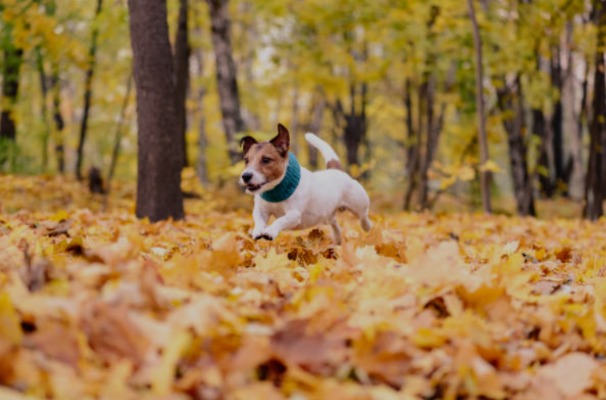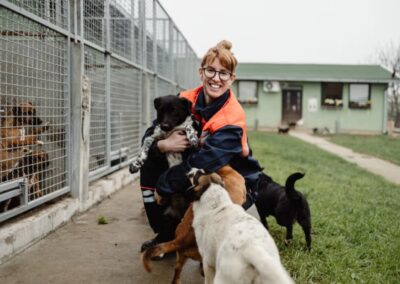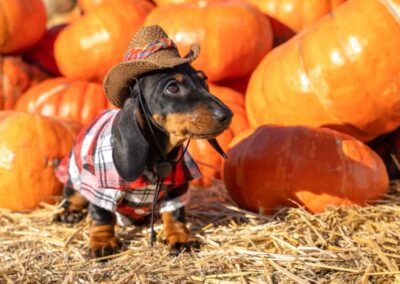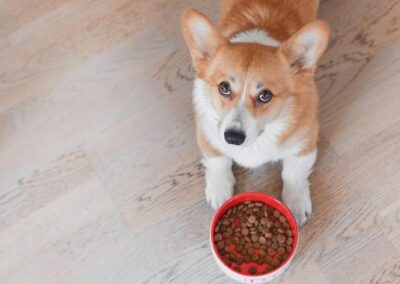
When fall comes around, one of the undeniable joys is watching dogs dive head-first into piles of crunchy, colorful leaves.
It looks irresistibly fun, and many dogs seem born for it.
But before you let your pup plunge in, it’s smart to understand what actually lurks beneath those leaves—and how to keep it safe and fun.
Leaf piles are not just decoration. They’re ecosystems.
Fallen leaves provide shelter, food, and moisture for insects, grubs, spiders, and even small rodents.
According to veterinary sources, decaying leaf layers can harbor parasites like ticks and fleas, mold or mildew, hidden sharp debris, and even toxic plant materials.
Because leaf piles conceal what you can’t see, dogs leaping in may inadvertently come into contact with hidden hazards: a stick or broken glass just under the surface, a patch of mold, or a tick waiting for the next host.
Even a small scratch could turn into an infection if bacteria or pathogens are present.

Let’s break this down:
Parasites & insects: Ticks, fleas, spiders, and biting insects often take refuge under leaf cover. When dogs romp through, they stir them up.
Mold & allergens: Wet or old leaves can be breeding grounds for mold. For dogs with sensitivities, inhaling or touching mold spores can lead to respiratory irritation or skin issues.
Hidden hazards: The pile may conceal sharp branches, sticks, thorns, or broken debris. Even in your own yard, these hazards can lurk.
Toxic plants or debris: Some leaves are, by themselves, toxic if ingested—like red maple under certain conditions—and piles may contain berries, nuts, or other plant parts that a curious pup might sample.
Still, it isn’t all danger.
Many veterinarians and pet care writers agree that, with proper precautions, letting a dog play in leaf piles can be acceptable, especially if the piles are fresh and from your own yard (where you know what’s in them).
Here’s how to do it safely:
Control the pile – If it’s your yard, rake and inspect the leaves before letting your dog jump in. Remove sticks, trash, rocks, sharp items. Keep the pile dry and fresh, not soggy or decomposing.
Use known leaf piles – Avoid allowing your dog to romp through random piles on the street or in wooded areas you don’t know. Those can conceal more risk.
Tick and pest prevention – Make sure your dog is on preventive treatments for fleas and ticks before fall leaf season arrives. After leaf play, do a full body check—ears, underbelly, between toes.
Clean up afterward – Give your dog a bath or at least wipe them down to remove leaf debris, allergens, or insect eggs.
Supervise, don’t leave them alone – Always watch. If your dog starts chewing on leaves or swallowing them, intervene. Also, be alert for signs of injury or respiratory distress.
Avoid risky piles – Stay away from piles near roads, in public spaces, or those that look murky, damp, or old. These are more likely to contain hazards.

If your dog jumps into a pile and later shows signs like coughing, wheezing, vomiting, diarrhea, excessive scratching, limping, or swelling, contact your vet.
These could indicate tick bites, allergic reactions, ingestion of something toxic, or injuries.
At the end of the day, leaf play is a classic part of fall—for humans and dogs alike.
With a little care, you can let your pup enjoy the crunchy fun while minimizing the risks.
Ensure the leaf pile is fresh, under your control, and free from debris.
Keep up with pest prevention, supervise their play, and clean them up afterward.
That way, you get joy, laughter, and wagging tails—without the regret.



